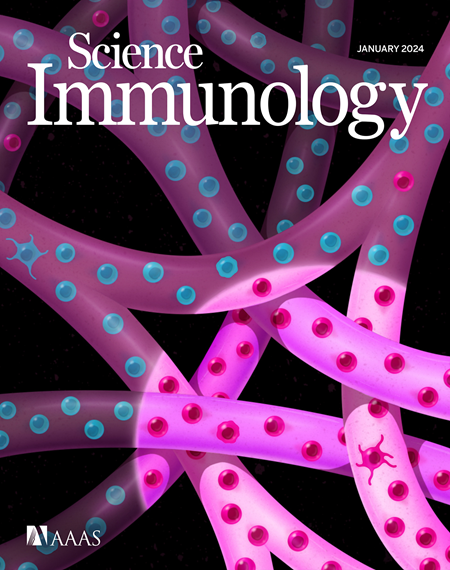皮肤损伤信号介导对空间非连接抗原的过敏致敏
IF 17.6
1区 医学
Q1 IMMUNOLOGY
引用次数: 0
摘要
我们目前对病原体免疫的理解表明,抗原与危险信号的解剖偶联是形成免疫记忆的必要特征。然而,在非病原体炎症的背景下,这种解剖耦合的严格程度尚不清楚。在这里,我们证明了多种皮肤损伤模式足以诱导对引入肠道抗原的体液反应。皮肤损伤诱导了一小部分内分泌细胞因子,这些细胞因子对于在各种远端组织中引入抗原是必要和充分的。因此,除了抗原通过受损皮肤进入的“局部启动”外,还存在另一种“远程启动”范式,其中由于损伤相关中介体的传播,解剖偶联并不必要。我们的发现对理解体液记忆形成的基本机制具有重要意义,对食物过敏和疫苗学等疾病具有广泛的意义。本文章由计算机程序翻译,如有差异,请以英文原文为准。
Skin damage signals mediate allergic sensitization to spatially unlinked antigen
Our current understanding of immunity to pathogens suggests that anatomic coupling of antigens with danger signals is a required feature for the formation of immune memory. However, in the context of pathogen-independent inflammation, the stringency of this anatomical coupling is unclear. Here, we demonstrate that multiple modes of skin injury were sufficient to induce a humoral response to antigens introduced in the gut. Skin damage induced a narrow subset of endocrine cytokines that were necessary and sufficient for the priming of antigens introduced at various distal tissues. Thus, in addition to “local priming” of antigen entering through damaged skin, there also exists another paradigm of “remote priming” where anatomical coupling is not essential because of the dissemination of damage-associated intermediaries. Our findings have implications for understanding the fundamental mechanisms of the formation of humoral memory with wide implications for diseases such as food allergy and in vaccinology.
求助全文
通过发布文献求助,成功后即可免费获取论文全文。
去求助
来源期刊

Science Immunology
Immunology and Microbiology-Immunology
CiteScore
32.90
自引率
2.00%
发文量
183
期刊介绍:
Science Immunology is a peer-reviewed journal that publishes original research articles in the field of immunology. The journal encourages the submission of research findings from all areas of immunology, including studies on innate and adaptive immunity, immune cell development and differentiation, immunogenomics, systems immunology, structural immunology, antigen presentation, immunometabolism, and mucosal immunology. Additionally, the journal covers research on immune contributions to health and disease, such as host defense, inflammation, cancer immunology, autoimmunity, allergy, transplantation, and immunodeficiency. Science Immunology maintains the same high-quality standard as other journals in the Science family and aims to facilitate understanding of the immune system by showcasing innovative advances in immunology research from all organisms and model systems, including humans.
 求助内容:
求助内容: 应助结果提醒方式:
应助结果提醒方式:


